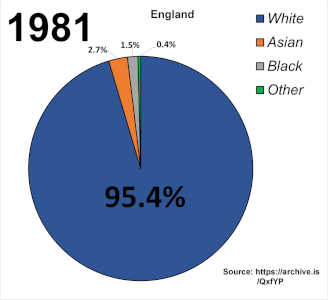They tell you it’s a conspiracy theory that you’re being replaced.
Then they calmly explain to you that you’re being replaced.
The UK population is projected to grow to 73.7 million by mid-2036, according to new figures from the Office for National Statistics, which predicts hitting the 70 million mark a decade earlier than previously thought.
This represents an increase of about 6.6 million, or 9.9%, from the estimated 67 million in mid-2021.
Long-term international net migration – the difference between the number of people entering the country and leaving – is projected to account for 6.1 million of the increase, with the remainder coming from a higher number of births than deaths.
Immigrant births.
White people are not having children in any country.
All the figures are projections, not predictions or forecasts, because they are based on current and past trends.
The actual levels of future migration and population may be higher or lower, and will be “affected by policy changes as well as the impact of as yet unknown migrant behaviour patterns”, the ONS said.
When exactly has it ever gotten “lower?”
The new projections assume that net migration will fall over the next few years from a peak of about 670,000 in the 12 months to June 2023, before settling at 315,000 from 2028 onwards.
Over the 15 years from mid-2021 to mid-2036 it is projected that 10.8 million people will be born, 10.3 million will die, 13.7 million will move long-term to the UK, while 7.6 million people will emigrate.
The new projections point to the “likelihood of higher levels of international migration over the long-term” than in previous estimates, said the ONS’s head of population and household projections, James Robards.
“It is important to recognise that there is uncertainty in the provisional international migration estimates,” he stressed. “Future migration will be affected by policy changes as well as the impact of as yet unknown migrant behavioural patterns in the future.”
The latest projections suggest the UK population could hit 70 million by mid-2026 – a decade sooner than in figures published in 2022, which projected a date of mid-2036.
If they’re increasing the estimates by a decade every two years, then… that’s not good.

